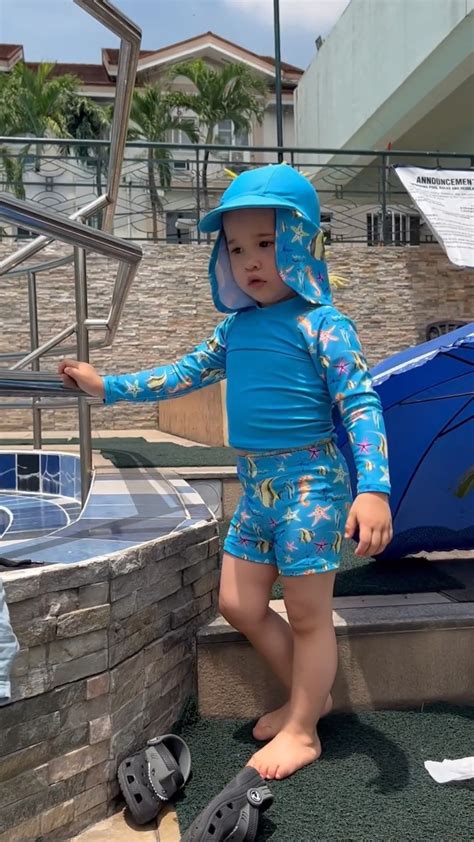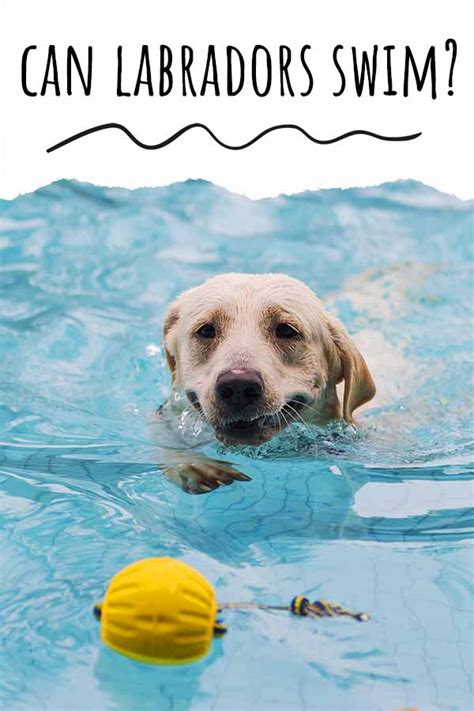
Taking a quick photo of your stove before leaving for vacation can provide significant peace of mind and potentially prevent a disaster, a practice increasingly recommended by safety experts.
For many, the excitement of an upcoming vacation is often accompanied by a nagging sense of unease: Did I turn off the stove? This simple question can plague travelers, leading to unnecessary stress and, in some cases, premature returns home. The solution, according to safety advocates and seasoned travelers, is surprisingly simple: snap a quick picture of your stove (and other potentially problematic appliances) before heading out.
The rationale behind this practice is straightforward. A photograph provides visual confirmation that the stove is indeed off, eliminating any lingering doubts. “It’s a quick and easy way to double-check that everything is in order before you leave,” explains Emily Thompson, a fire safety consultant. “That picture is worth more than a thousand frantic thoughts during your vacation.”
The concept has gained traction in recent years, fueled by social media and word-of-mouth recommendations. Numerous online forums and travel blogs feature discussions on the “stove photo” hack, with users sharing their personal experiences and emphasizing the peace of mind it provides. Some even advocate for taking photos of other appliances and potential hazards, such as irons, curling irons, and space heaters.
The underlying psychology is rooted in the fallibility of human memory. Under the pressure of preparing for a trip, it’s easy to forget routine tasks or misremember performing them. A visual reminder offers concrete evidence that can override these cognitive biases. “Our brains are wired to fill in gaps in our memory,” says Dr. Sarah Chen, a cognitive psychologist specializing in memory and decision-making. “Often, we convince ourselves we’ve done something when we haven’t. A photo provides an objective record.”
Furthermore, the simple act of taking a photo can serve as a mental cue, reinforcing the memory of turning off the appliance. By consciously documenting the state of the stove, individuals are more likely to accurately recall the action later.
Beyond personal peace of mind, the stove photo can also serve as valuable evidence in the event of an insurance claim. If a fire were to occur and the cause were disputed, a timestamped photograph could help demonstrate that the stove was indeed off when the homeowner left. “While we hope it never comes to that, having photographic evidence can be incredibly helpful in resolving any potential disputes with your insurance company,” Thompson advises.
The practice extends beyond stoves to other potential fire hazards. Curling irons, hair straighteners, and space heaters are frequently cited as appliances that should be photographed before leaving for an extended period. Similarly, unplugging appliances like televisions and computers can reduce the risk of electrical fires and conserve energy.
While the stove photo hack is primarily aimed at preventing fires, it can also address other household concerns. Some travelers take photos of their thermostat settings to ensure that their home’s temperature is properly regulated while they’re away. Others photograph their water heater to confirm that it’s turned off, preventing potential leaks or burst pipes.
The rise of smart home technology has provided alternative solutions to the “stove photo” problem. Many modern stoves and ovens can be controlled remotely via smartphone apps, allowing users to check their status and turn them off from anywhere in the world. Smart plugs can be used to control other appliances, providing similar remote monitoring and control capabilities.
However, the “stove photo” remains a popular option due to its simplicity and accessibility. It requires no special equipment or technical expertise, making it an ideal solution for anyone with a smartphone. Moreover, it provides a tangible record that can be easily shared with family members or house sitters.
For individuals prone to anxiety or those with a history of forgetting household tasks, the “stove photo” can be an invaluable tool for managing stress and preventing potential disasters. It’s a small, simple act that can provide significant peace of mind and ensure a more enjoyable and worry-free vacation.
The practice is also recommended by fire departments across the country. Many fire departments include taking photos of appliances as part of their pre-vacation safety checklist. “We encourage residents to take proactive steps to protect their homes while they’re away,” says Chief Michael Davis of the Anytown Fire Department. “Taking a few photos of your stove and other appliances is a simple yet effective way to prevent fires and other household emergencies.”
Moreover, the concept of visual verification extends beyond the home. Many travelers also recommend taking photos of their car’s dashboard before embarking on a long road trip, ensuring that all warning lights are off and that the fuel level is adequate. Similarly, photographing valuable items before leaving for a trip can provide a record of their condition in case of theft or damage.
The “stove photo” phenomenon reflects a growing awareness of the importance of proactive safety measures. In an increasingly interconnected world, where information is readily available and shared, individuals are empowered to take control of their personal safety and security.
The habit has become so ingrained in some people’s pre-travel routine that they find it unusual not to do it. “I almost feel like I’m forgetting something if I don’t take a picture of the stove,” says avid traveler Jane Miller. “It’s just become part of my routine, like locking the door or setting the alarm.”
While the primary focus is on fire prevention, the underlying principle of the “stove photo” can be applied to various aspects of home security and safety. The key is to identify potential hazards and take proactive steps to mitigate them. Whether it’s taking a photo of the stove, unplugging appliances, or adjusting the thermostat, these simple actions can provide significant peace of mind and help ensure a safe and enjoyable vacation.
The spread of this practice is also a testament to the power of social media in promoting safety awareness. Through online forums, travel blogs, and social media platforms, individuals are sharing their experiences and recommendations, creating a collective knowledge base that benefits everyone.
The simplicity and effectiveness of the “stove photo” make it an appealing option for people of all ages and backgrounds. It requires no special skills or equipment, and it can be easily incorporated into any pre-travel checklist.
In conclusion, taking a quick photo of your stove and other potential hazards before leaving for vacation is a simple yet powerful way to prevent fires, manage stress, and ensure a more enjoyable and worry-free trip. It’s a testament to the importance of proactive safety measures and the power of visual verification in overcoming the fallibility of human memory.
Frequently Asked Questions (FAQs)
1. Why should I take a picture of my stove before going on vacation?
Taking a picture of your stove, especially confirming it’s off, provides visual confirmation that you’ve turned it off, reducing anxiety and preventing potential fire hazards while you’re away. According to fire safety consultant Emily Thompson, “It’s a quick and easy way to double-check that everything is in order before you leave. That picture is worth more than a thousand frantic thoughts during your vacation.” The image serves as a tangible reminder, overriding potential memory lapses caused by the stress of pre-vacation preparations. Furthermore, in the unlikely event of a fire, the photograph can serve as evidence for insurance claims.
2. What other appliances should I photograph besides the stove?
Besides the stove, consider photographing other appliances that pose a fire risk, such as curling irons, hair straighteners, space heaters, and ovens. Also, photograph your thermostat to confirm the proper setting for energy savings and to prevent burst pipes during winter months. Similarly, taking photos of unplugged electronics like televisions and computers can reduce the risk of electrical fires and conserve energy. The principle is to visually document the state of any appliance that could potentially cause harm or waste energy while you are away.
3. How can a photo of my stove help with an insurance claim?
If a fire occurs while you’re away and the cause is disputed, a timestamped photograph showing the stove was off when you left can serve as valuable evidence for your insurance company. It provides verifiable proof that you took precautions to prevent the fire. As Emily Thompson advises, “While we hope it never comes to that, having photographic evidence can be incredibly helpful in resolving any potential disputes with your insurance company.” The photo essentially shifts the burden of proof, demonstrating that you acted responsibly.
4. Is taking a photo of my stove necessary if I have smart home technology?
While smart home technology like remotely controlled stoves and smart plugs offers the ability to check and control appliances remotely, taking a photo still provides a backup. Technology can fail due to power outages or software glitches. A photograph serves as an independent, tangible record of the appliance’s state at the time of departure. It’s a low-tech solution that complements high-tech options, ensuring peace of mind regardless of technological malfunctions.
5. How has social media influenced the “stove photo” trend?
Social media platforms, online forums, and travel blogs have played a significant role in popularizing the “stove photo” trend. Users share their personal experiences and recommendations, highlighting the peace of mind it provides. This collective knowledge sharing creates a sense of community and reinforces the idea that taking proactive safety measures is both simple and effective. The trend is a testament to the power of social media in promoting safety awareness and encouraging individuals to take control of their personal safety and security.
Expanded In-depth Analysis and Background Information:
The seemingly simple act of snapping a photo of your stove before embarking on a vacation embodies a deeper trend towards proactive safety and risk mitigation in modern life. The “stove photo” phenomenon is more than just a quirky habit; it reflects a growing awareness of personal responsibility and a desire to control potential hazards that could disrupt one’s life.
The root of this trend lies in several factors, including increased access to information, a heightened awareness of potential dangers, and the psychological impact of modern life’s fast pace and constant distractions.
-
Information Overload and Risk Awareness: The internet and social media have provided unprecedented access to information about potential risks and hazards. News stories about house fires, burglaries, and other home emergencies are readily available, making people more conscious of the potential dangers that could affect them. This increased awareness has led to a greater emphasis on preventative measures.
-
Psychological Impact of Modern Life: Modern life is characterized by a fast pace, constant distractions, and information overload. These factors can contribute to forgetfulness and a decreased ability to focus on routine tasks. The “stove photo” acts as a simple, practical solution to combat these cognitive challenges, providing a tangible reminder that can override potential memory lapses.
-
Empowerment and Personal Responsibility: The “stove photo” also reflects a growing sense of empowerment and personal responsibility. Individuals are increasingly taking control of their own safety and security, rather than relying solely on external authorities or institutions. This proactive approach is evident in various aspects of life, from home security to personal health.
The Psychology Behind Visual Verification:
The effectiveness of the “stove photo” is deeply rooted in the psychology of memory and decision-making. Visual information is processed differently by the brain than verbal or abstract information. Images tend to be more easily remembered and recalled, particularly when they are associated with a specific action or event.
-
Encoding Specificity Principle: This principle states that memory retrieval is most effective when the conditions at retrieval match the conditions at encoding. In the case of the “stove photo,” the act of taking the photo creates a specific encoding context that includes the visual appearance of the stove, the time of day, and the individual’s emotional state. When later recalling whether the stove was turned off, the photo serves as a powerful retrieval cue that helps to recreate the original encoding context.
-
Dual-Coding Theory: This theory proposes that information is processed and stored in memory in two distinct forms: verbal codes and visual codes. When both types of codes are available, memory is enhanced. The “stove photo” provides both a visual code (the image of the stove) and a verbal code (the memory of taking the photo and thinking about turning off the stove).
-
Cognitive Biases: The “stove photo” can also help to mitigate cognitive biases, such as the confirmation bias (the tendency to seek out information that confirms existing beliefs) and the availability heuristic (the tendency to overestimate the likelihood of events that are easily recalled). By providing concrete visual evidence, the photo can override these biases and ensure a more accurate assessment of the situation.
Expanding the Scope: Beyond the Stove:
While the “stove photo” is the most commonly cited example, the principle of visual verification can be applied to a wide range of situations and potential hazards. The key is to identify areas where forgetfulness or uncertainty could lead to negative consequences and to create a system for visually documenting the state of affairs.
-
Home Security: Taking photos of locked doors and windows before leaving for a trip can provide peace of mind and serve as evidence in case of a break-in. Similarly, photographing valuable items can help with insurance claims if they are stolen or damaged.
-
Vehicle Maintenance: Taking photos of the car’s dashboard before a long road trip can ensure that all warning lights are off and that the fuel level is adequate. This can help to prevent breakdowns and other roadside emergencies.
-
Health and Safety: Taking photos of medication dosages or emergency contact information can be helpful in case of a medical emergency.
-
Financial Matters: Taking photos of important documents, such as passports, driver’s licenses, and insurance policies, can provide a backup in case the originals are lost or stolen.
The Role of Fire Departments and Safety Organizations:
Fire departments and safety organizations across the country have recognized the value of proactive safety measures like the “stove photo” and actively promote them as part of their fire prevention campaigns. These organizations provide valuable resources and information on home safety, including checklists, tips, and educational materials.
-
Pre-Vacation Safety Checklists: Many fire departments offer pre-vacation safety checklists that include taking photos of appliances, unplugging unnecessary electronics, and ensuring that smoke detectors are functioning properly.
-
Community Outreach Programs: Fire departments often conduct community outreach programs to educate residents about fire safety and promote preventative measures.
-
Partnerships with Insurance Companies: Some insurance companies partner with fire departments and safety organizations to offer discounts on insurance premiums for homeowners who implement safety measures, such as installing smoke detectors and taking proactive steps to prevent fires.
The Future of Home Safety:
The “stove photo” is just one example of how technology and increased awareness are shaping the future of home safety. As smart home technology becomes more sophisticated and affordable, individuals will have even more tools at their disposal to monitor and control their homes remotely.
-
Smart Home Integration: In the future, we can expect to see even greater integration between smart home devices and safety systems. For example, smart smoke detectors could automatically shut off the stove or other appliances in the event of a fire.
-
Artificial Intelligence (AI): AI could be used to analyze data from smart home devices to identify potential hazards and provide personalized safety recommendations.
-
Virtual Reality (VR): VR could be used to create simulations of potential fire scenarios, allowing homeowners to practice emergency procedures in a safe and controlled environment.
Counterarguments and Considerations:
While the “stove photo” is generally considered a helpful and harmless practice, there are a few potential drawbacks to consider.
-
Privacy Concerns: Taking photos of your home and its contents raises privacy concerns, particularly if those photos are stored on a cloud service or shared with others. It’s important to be mindful of who has access to these photos and to take steps to protect your privacy.
-
False Sense of Security: Relying solely on the “stove photo” could create a false sense of security and lead to complacency. It’s important to remember that the photo is just one tool in a comprehensive safety plan and that other measures, such as regular maintenance and inspection of appliances, are also necessary.
-
Time Commitment: While taking a photo is quick and easy, it does require a small amount of time and effort. For some individuals, this may be a deterrent, particularly if they are already feeling rushed or stressed.
Despite these potential drawbacks, the benefits of the “stove photo” generally outweigh the risks. It’s a simple, practical, and effective way to reduce anxiety, prevent potential hazards, and ensure a safer and more enjoyable vacation.
In conclusion, the “Vacation Peace of Mind: Snap a Stove Pic Before You Go!” phenomenon highlights the increasing importance of proactive safety measures in modern life. By taking a simple photo of your stove and other potential hazards before leaving for vacation, you can reduce anxiety, prevent potential disasters, and ensure a more enjoyable and worry-free trip. The practice is a testament to the power of visual verification, the fallibility of human memory, and the growing awareness of personal responsibility for safety and security. It underscores the importance of leveraging available tools and information to mitigate risks and create a safer and more secure environment for ourselves and our families.









